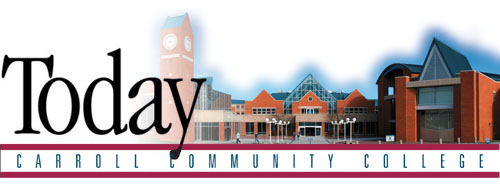|
Carroll Community College is committed to ongoing assessment and evaluation of its programs and services, and to public documentation of institutional effectiveness to provide accountability to its stakeholders. Among the more recent additions to this assessment-accountability process is implementation of the “Maryland Model of Community College Student Degree Progress.” The Maryland Model was developed by the Maryland Community College Accountability Work Team in 2005, and outcomes of the model are now incorporated in the state-mandated accountability reports submitted to the Maryland Higher Education Commission each June.
The model reports the graduation, transfer, and persistence rates of students four years after entering the college in the fall as first-time college students.
The narrative below describes outcomes for both the 2000 and 2001 cohorts. Data for the 2001 cohort are reported in the table at the bottom of the page.
What is the college’s graduation rate?
Four years after entering Carroll as first-time college students in fall 2000, 28 percent of the students attempting at least 18 hours in their first two years at Carroll had graduated with a degree or certificate from Carroll. (The 18-hour threshold is used to exclude students not evidencing pursuit of a degree.) Most of these graduates, 96 percent, had earned a degree. Students starting college at Carroll in fall 2001 had a higher four-year graduation rate, nearly 34 percent. These rates include students attending part-time; graduation rates go up as time passes and students progressing more slowly complete their programs.
What proportion of the college’s students transfer to another college?
Four years after entering Carroll as first-time college students in fall 2000, 46 percent of the students attempting at least 18 hours in their first two years at Carroll had transferred to another college or university. Half of the transfers had continued their studies at a public four-year college in Maryland. Nearly a quarter of the transfers enrolled in an out-of-state institution. Ten percent enrolled at a private four-year college in Maryland; with the remainder continuing their education at a Maryland two-year community or technical college. Students entering Carroll in fall 2001 transferred at a higher rate: over half (50.8 percent) had transferred within four years of starting at Carroll.
What proportion graduate or transfer?
Since many students are pursuing the baccalaureate, they often leave before completion of the Associates degree. So a traditional outcomes measure for community colleges is the proportion graduating and/or transferring. This “graduation-transfer rate” for the fall 2000 cohort at Carroll was 54.4 percent after four years. The fall 2001 cohort achieved a graduation-transfer rate of 60.6 percent. These rates reflect degree progress four years after students started college; the rates will go up as more time passes and more students in these cohorts graduate or transfer.
What proportion of the first-time students make a successful transition to college?
Adding to the total graduating or transferring those students earning at least 30 credits from Carroll with a 2.0 or above grade point average finds seven in ten making a successful transition to college.
What proportion are successful or persisting after four years?
Nearly three-fourths of the students entering in fall 2000 had graduated, transferred, completed 30 credits in good standing, or were still enrolled after four years. For the fall 2001 cohort, this “successful-persister rate” remained at 74 percent.
Does the need for developmental education influence degree progress?
Students who place into developmental courses, enroll in all recommended developmental courses, and successfully pass all recommended developmental courses, have degree progress rates similar to college-ready students. Among the fall 2001 cohort, the graduation-transfer rate for students who needed and completed all developmental requirements was 69.9 percent, higher than the graduation-transfer rate of students who entered college-ready and not placing into any developmental classes (68.2 percent). In contrast, students placing into developmental courses and not completing all developmental requirements within the four-year study period had a graduation-transfer rate of 20.7 percent.
Degree Progress of Fall 2001 Entrants Four Years After Initial Enrollment
| Progress/Status |
All Students
(N=449) |
College-ready
(N=88) |
Developmental Completers
(N=279) |
Developmental Non-completers
(N=82) |
Graduated from Carroll Community College
|
33.9%
|
36.4% |
43.0% |
0.0% |
Transferred to another college or university
|
50.8%
|
59.1% |
57.0% |
20.7% |
Graduated and/or transferred
|
60.6%
|
68.2% |
69.9% |
20.7% |
No award or transfer, but 30 credits with 2.0 GPA
|
12.5%
|
13.6% |
14.0% |
6.1% |
Graduated, transferred or 30 credits w/2.0 GPA
|
73.1% |
81.8% |
83.9% |
26.8% |
Still enrolled at Carroll
|
0.7% |
0.0% |
1.1% |
0.0% |
| Graduated, transferred, 30 credits, or still enrolled |
73.7% |
81.8% |
84.9% |
26.8% |
Note: Study cohort of 449 represents fall 2001 first-time-any-college students who attempted at least 18 hours over next two years.
Back to top
|
